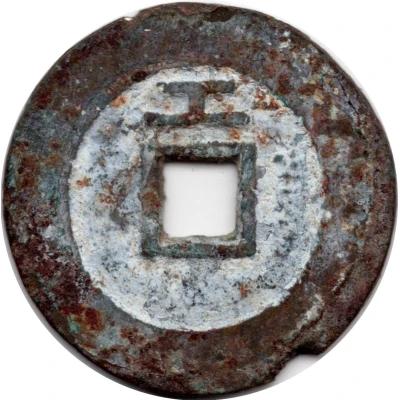1 Cash - Chongzhen Tongbao; northern type; Gong with dot ND
| Brass | - | 24 mm |
| Issuer | Empire of China |
|---|---|
| Emperor | Ming dynasty › Chongzhen (崇祯帝) (1627-1644) |
| Type | Standard circulation coin |
| Years | 1630-1644 |
| Value | 1 Cash |
| Currency | Cash (621-1912) |
| Composition | Brass |
| Diameter | 24 mm |
| Shape | Round with a square hole |
| Technique | Cast |
| Orientation | Medal alignment ↑↑ |
| Demonetized | Yes |
| Updated | 2024-10-03 |
| Numista | N#222618 |
|---|---|
| Rarity index | 100% |
Reverse
One Chinese ideogram below and dot above.
Script: Chinese (traditional, regular script)
Lettering: 工
Translation:
Gong
Ministry of Works (mint)
Edge
Plain
Comment
Hartill suggests the larger, heavier coins (around 26 millimetres and weighing 1.3 Qian) were the first 1 Cash pieces produced. By 1630, coins minted in the north weighted 1.0 Qian and coins minted in the south weighed 8 Fen or less.The Northern types and the Southern types are differenciated by the left part of Zhen.
- Northern types: 礻
- Southern types: 示
Interesting fact
One interesting fact about the Standard circulation coin 1 Cash - Chongzhen (Tongbao; northern type; Gong with dot) ND (1630-1644) from Empire of China made of Brass is that it was used as a form of currency during the Chongzhen era of the Ming dynasty, which was a time of great economic and cultural growth in China. The coin's design, featuring a gong with a dot in the center, was meant to symbolize the unity and harmony of the people under the rule of the Ming dynasty. Additionally, the use of brass as the material for the coin was a significant departure from the traditional use of copper, and it reflects the government's effort to introduce new materials and technologies into the currency system.



